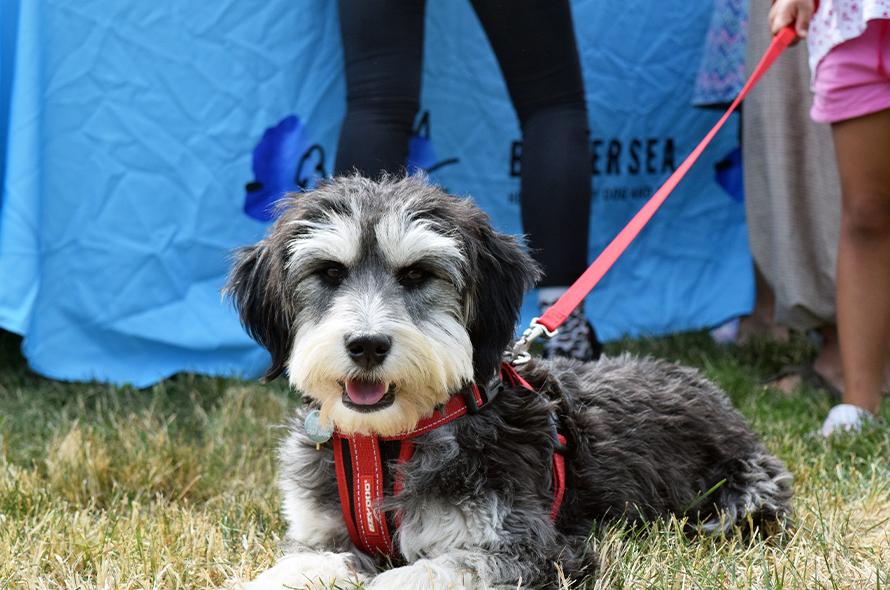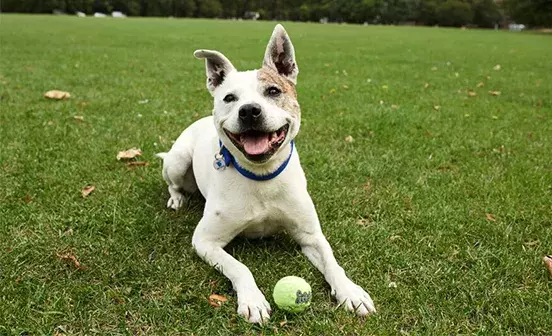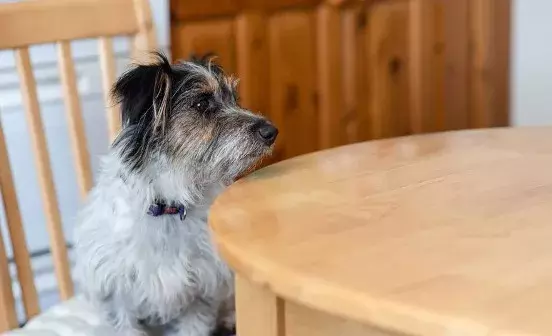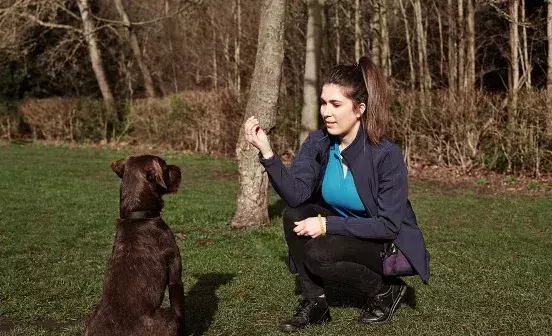Children and dogs can be the best of friends, but a good first impression is crucial.

Start by keeping them separate
Start by keeping them physically separate from one another. Ensure that both your dog and your child have safe spaces that neither can access. A play pen for your child, a crate for your dog, and the use of baby gates are excellent ways of achieving this. You can still introduce them to each other this way, where they can see, hear and interact with each other, but equally have their own space to relax and enjoy their own activities. Just with your toddler, be sure to provide your dog with plenty of enrichment to keep them occupied when they’re in their safe spaces.
Encourage gentle interactions
When bringing your dog and child together for constructive activities, try not to overwhelm your dog by encouraging them to come to your child. If your dog approaches on their own, encourage your child to pet them gently and slowly. It’s important to always supervise the interactions to ensure they’re safe and friendly. Seeing them play together is guaranteed to put a smile on your face, but it’s crucial to ensure these interactions are handled carefully to prevent your dog from having a negative experience with your child.
Children can be slightly unpredictable in their behaviour which makes it hard for dogs to anticipate what’s going to happen. They’re learning to move in new ways, they’re gradually gaining their balance, and they’ve discovered how to use their voice – creating all kinds of loud and sudden sounds. Your dog will likely find these things concerning, so it’s important to maintain healthy and respectful interactions between the two.
Always encourage your child to be gentle when playing with your dog. Don’t allow them to pull on their fur, ears or tail as this will be distressing for them. Dogs don’t always like to be hugged, so don’t allow your toddler to wrap their arms around them, no matter how tempting this may be. It's important that your child is respectful and doesn’t treat your dog like a toy, so always keep playtime as calm as possible.
Always supervise your dog and child
Remember that children can find dogs intimidating, especially if they are bigger in size or are acting a bit boisterous. Always discourage any form of rough play and be prepared to move your child away if you think your dog will jump up at them. They should be trained in basic commands such as ‘sit’, ‘stay’, and ‘leave’, so do make use of these if you need to. After these interactions, encourage your toddler to give your dog some space so that they can have a break and don’t get overwhelmed.
If your dog shows any sign of aggression towards your child at any point, we recommend consulting your vet for a referral to a behaviourist or trainer for further advice.


